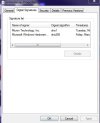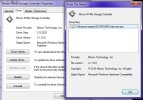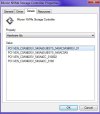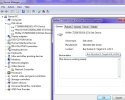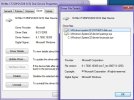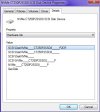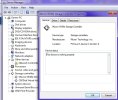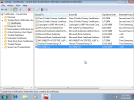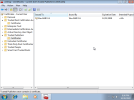The_Pissed_One
New Member
- Messages
- 11
- Reaction score
- 1
I have bought a brand new Crucial P2 NVMe drive. I want to install Windows 7 Pro 64 to it as a separate bootable install to what I have now. I have tried, and tried and tried to slipstream the USB 3.0 and NVMe drivers to the install using tools I have found on YouTube and what have you to no joy. Finally, I tried NTLite and was then able to (somewhat) slipstream the NVMe and USB drivers and compile to ISO and write that ISO to a USB drive. It booted, but I got an error about a missing CD driver yada, yada, so perhaps the USB driver was wrong. No problem. This time I just burned the damn ISO to DVD and booted that. Now I was not only able to get further in the install process, but Windows sees the NVMe drive! Hurray! Well, the party was short lived because after waiting for the install on slow optical media which was successful, Windows did its required reboot and said the damn NVMe driver was unsigned. "BS!" I yelled, because I checked the INF files and whatnot I downloaded from Crucial's website and all are signed.
So with that, this computer tech needs help even though I know TONS about computers, websites, cybersecurity, you name it. This signed driver crap is for the birds.
A) Here's the driver I downloaded. Scroll to the bottom where it says, "NVMe SSD driver for Windows OS." I slipstreamed the legacy 64 bit version into Windows 7 Pro 64 using NTLite. I also removed the other Windows versions to slightly lighten the ISO size using NTLite. If you download the driver you can see this driver is signed by right clicking on the sys and cat files and viewing properties. The INF isn't signed however and I think that's a manefest file or something. Been a while since I learned what an INF was. And in my current Windows 7 install I installed the NVMe driver with the MSI installer with no issue once so ever. (an MSI installer)! Though, I have a very uniqe setup where I may have ripped driver signing crap right out of Windows. I don't remember. Never the less, in my current running Windows 7 computer the NVMe drive DOES shows up in "My Computer"
B) Is there a way I can just rip this driver signing facility right out of Windows 7 using NTLite or some other third party tool?
C) Why on earth am I getting a signed driver error after Windows was installed and where the driver is clearly signed?
If it helps, here's my NTLite log (password: Winblows) (alternative link/alternative site) The first part of the log referring to drive E was my first and failed attempt. Latter, I read this write upand was successful (I think). Drive G is where all the action is. You'll note I added to the Microsoft Windows Recovery Environment, Microsoft Windows PE, boot.wim and install.wim. Should I just use boot and install?
Addendum:
When I installed the driver to this current running Windows 7 install using the MSI installer, this is what I see in Device Manager. Windows? 2006?! I was expecting it to say Micron with a year of 2021.
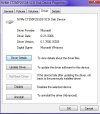
Thanks for any help and shedding any light to this massive issue. Perhaps I won't need to get hair replacement after all...
So with that, this computer tech needs help even though I know TONS about computers, websites, cybersecurity, you name it. This signed driver crap is for the birds.
A) Here's the driver I downloaded. Scroll to the bottom where it says, "NVMe SSD driver for Windows OS." I slipstreamed the legacy 64 bit version into Windows 7 Pro 64 using NTLite. I also removed the other Windows versions to slightly lighten the ISO size using NTLite. If you download the driver you can see this driver is signed by right clicking on the sys and cat files and viewing properties. The INF isn't signed however and I think that's a manefest file or something. Been a while since I learned what an INF was. And in my current Windows 7 install I installed the NVMe driver with the MSI installer with no issue once so ever. (an MSI installer)! Though, I have a very uniqe setup where I may have ripped driver signing crap right out of Windows. I don't remember. Never the less, in my current running Windows 7 computer the NVMe drive DOES shows up in "My Computer"
B) Is there a way I can just rip this driver signing facility right out of Windows 7 using NTLite or some other third party tool?
C) Why on earth am I getting a signed driver error after Windows was installed and where the driver is clearly signed?
If it helps, here's my NTLite log (password: Winblows) (alternative link/alternative site) The first part of the log referring to drive E was my first and failed attempt. Latter, I read this write upand was successful (I think). Drive G is where all the action is. You'll note I added to the Microsoft Windows Recovery Environment, Microsoft Windows PE, boot.wim and install.wim. Should I just use boot and install?
Addendum:
When I installed the driver to this current running Windows 7 install using the MSI installer, this is what I see in Device Manager. Windows? 2006?! I was expecting it to say Micron with a year of 2021.

Thanks for any help and shedding any light to this massive issue. Perhaps I won't need to get hair replacement after all...

